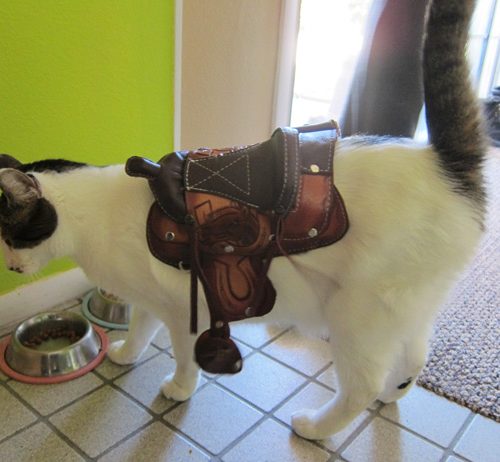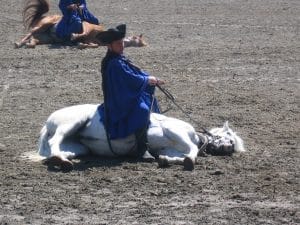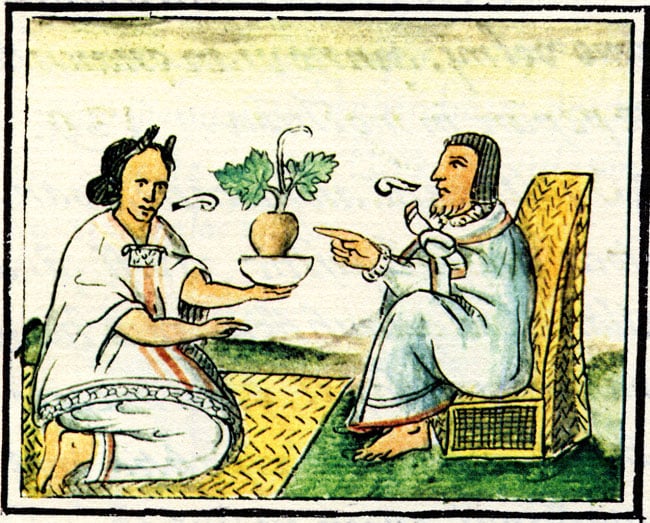 Pretty much everyone agrees that it’s nice to ride in a comfortable saddle. Most likely, horses would agree that a saddle should be comfortable for them, too. In the last decade or so, the horse’s saddle has received a good bit of attention in equine studies, especially as to how it related to welfare, performance, and safety issues for horses and riders. While most saddle research has been conducted on English-type saddles, proper saddle fit is an important consideration no matter what the horse’s use. When welfare, safety, and performance considerations of a well-fitting saddle are not considered, researchers have found that horse problems (particularly lameness) can occur.
Pretty much everyone agrees that it’s nice to ride in a comfortable saddle. Most likely, horses would agree that a saddle should be comfortable for them, too. In the last decade or so, the horse’s saddle has received a good bit of attention in equine studies, especially as to how it related to welfare, performance, and safety issues for horses and riders. While most saddle research has been conducted on English-type saddles, proper saddle fit is an important consideration no matter what the horse’s use. When welfare, safety, and performance considerations of a well-fitting saddle are not considered, researchers have found that horse problems (particularly lameness) can occur.
When it comes to “proper” saddle fit, there are a couple of things that pretty much everyone seems to agree on. First, as a general rule, saddles and pads should help distribute the weight of the rider fairly evenly over the horse’s back. Second, they should avoid pressure points or “bridging” from the withers to a spot on the horse’s back. Beyond that, well, things can get a bit murky. The devil, as they say, is in the details (“they” meaning nobody is exactly sure who said it in the first place).
Oh, one other thing, before we get started. While I completely agree that a saddle should fit the horse well, I’m also pretty confident that the fit of a horse’s saddle is not what is keeping anyone from fulfilling their world championship/Olympic dreams. Just sayin’.
SADDLE VARIABLES
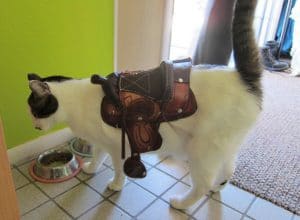 Saddle problems are not necessarily easy to study. One reason is that there are so many variables related to the saddle itself. For example, solid wooden trees, such as are common in Western saddles, differ greatly from the spring trees commonly found in English saddles. Many trees are made with synthetic materials; treeless saddles are also made for both disciplines. Even with treeless saddles there is no, “One size fits all.” Treeless saddles differ in their construction and flexibility, but force is still transferred via the saddle to the horse’s back.
Saddle problems are not necessarily easy to study. One reason is that there are so many variables related to the saddle itself. For example, solid wooden trees, such as are common in Western saddles, differ greatly from the spring trees commonly found in English saddles. Many trees are made with synthetic materials; treeless saddles are also made for both disciplines. Even with treeless saddles there is no, “One size fits all.” Treeless saddles differ in their construction and flexibility, but force is still transferred via the saddle to the horse’s back.
One thing that has remained something of a constant is that most saddles are constructed based on principles that have existed for centuries. So as much as we may think we know about how saddles should fit, it may even be that other designs that have not yet even been considered will be preferable, although there’s probably only so much that can be done.
PADS, TOO
Of course, with all of the variables to consider in the saddle, padding is yet another consideration. English saddles typically rely on cushioning built into the saddle itself, whereas Western saddles typically are cushioned by heavy padding. Wool flocking is favored by some, but foam flocking can also be effective. Shim pads can help redistribute pressure. Gel pads do not respond quickly to pressure changes, and may not be ideal when the saddle is rapidly loaded. There’s always something to discuss, when it comes t pads, and always a different option, it seems.
SADDLE SLIP
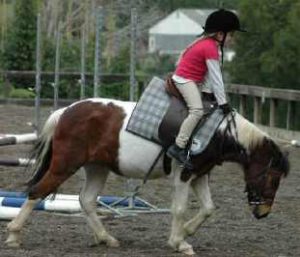 It’s pretty annoying when saddles start slipping around on a horse’s back. In fact, saddle slipping can contribute to poor performance and even lameness. But here’s the thing: a slipping saddle is not necessarily a saddle problem. Lameness can cause saddles to slip due to gait asymmetries. On the other hand, saddle slip can ultimately cause lameness: it’s a chicken and egg thing. Honestly, it’s not something that’s been studied much. but in one study, horses with lameness of the hind legs appear to be as much as 52 times more likely to have a slipping saddle than do horses that’s aren’t lame (CLICK HERE). Usually, saddles slip on the side of the horse with the lame leg, and, as might be expected, saddle slip tends to be more pronounced when the horse travels in a circle.
It’s pretty annoying when saddles start slipping around on a horse’s back. In fact, saddle slipping can contribute to poor performance and even lameness. But here’s the thing: a slipping saddle is not necessarily a saddle problem. Lameness can cause saddles to slip due to gait asymmetries. On the other hand, saddle slip can ultimately cause lameness: it’s a chicken and egg thing. Honestly, it’s not something that’s been studied much. but in one study, horses with lameness of the hind legs appear to be as much as 52 times more likely to have a slipping saddle than do horses that’s aren’t lame (CLICK HERE). Usually, saddles slip on the side of the horse with the lame leg, and, as might be expected, saddle slip tends to be more pronounced when the horse travels in a circle.
Believe it or not, a saddle that was fitted with even contact and uniform flocking has been associated with saddle slip, and so have evenly balanced saddles. A poorly flocked saddle, where there’s more or less flocking on one side or the other, can can also contribute to a saddle slipping problem. As you might imagine, saddles can slip when riders sit crookedly. Saddle slipping is reduced when heavier riders ride lame horses (they effectively smash the saddle down on the horse’s back), but when the saddle fit itself is the problem, heavier riders can actually cause the saddles to slip all by themselves. Horses with a large back shaper tend to also have slipping saddles. It’s always something. (CLICK HERE to learn more.)
THE HORSE’S BACK
Saddle problems are not simply a matter of poorly fitting saddles or lame horses, however. The shape of the horse’s back also contributes to the problems of slipping saddles. For example, a horse with a rounded back may also tend to have a saddle that slips. Somewhat paradoxically, a saddle that fits the horse’s back very well seems to be more likely to slip than is a poorly fitting saddle. Apparently, areas that are less well-fitted offer some resistance to slipping, whereas a well-fitted saddle that has even contact with the horse’s back may tend to slide over the muscles.
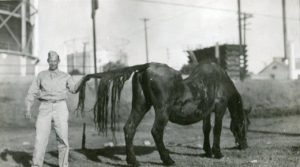 Of course, a horse’s back shape can change over time. This is probably obvious to anyone who has seen backs drop in older horses, or has seen their horse’s back muscles get bigger as the horse becomes more fit. Saddle fit changes as a horse gains weight, as well. On the other hand, lameness has negative effects on the shape of the horse’s back. Saddle fit can even change during exercise. For example, sound horses can experience an increase in back width during exercise that can result in a tight saddle, even when saddle fit was good at the start of exercise.
Of course, a horse’s back shape can change over time. This is probably obvious to anyone who has seen backs drop in older horses, or has seen their horse’s back muscles get bigger as the horse becomes more fit. Saddle fit changes as a horse gains weight, as well. On the other hand, lameness has negative effects on the shape of the horse’s back. Saddle fit can even change during exercise. For example, sound horses can experience an increase in back width during exercise that can result in a tight saddle, even when saddle fit was good at the start of exercise.
NOTE: I’m not suggesting that you should have half-a-dozen very expensive, albeit attractive, saddles on hand to adjust to each and every change in your horse’s body. Heaven forbid. I’m just pointing out that saddle fit is a very inexact area of study and it’s likely to stay that way for the foreseeable future.
THE RIDER
Of course, this isn’t just a horse:saddle relationship. the rider can influence things, too.
Brief Aside: I think that, in general, the influence of the rider on the horse is underappreciated, especially by some riders (usually the very same rider that’s causing the problem(s)). Lots and lots of problems that are usually attributed to some horse problem or tack problem or feed problem or lack of supplement problems or lack of massage problems are actually rider problems. It’s hard to tell some people that, however.
As might be expected, riders who exert more pressure on one side of the saddle or another load saddles more on one side or the other. This can contribute to saddle slipping, as well as lameness. Communicating such observations to the rider can is part of the “art” of medicine. “Go take riding lessons,” is not a prescription that is generally met with much enthusiasm. You have to handle these sorts of discussions with a good deal of finesse.
Another brief aside: As a good friend of mine once said, “You can tell a lady that when you look at her, time stands still. Or, you can tell her that she has a face that could stop a clock. Either way, time’s not going anywhere, but depending on how you say it, you’ll likely get a different response.” Like I said, you have to handle discussions about a horse’s performance with some finesse.
If saddle slipping is noted by an observer, or reported as a problem by the rider, it can help to have the horse ridden by a different rider to see if the problem still occurs. If the saddle is still slipping, the problem may be more likely to be related to a primary lameness.
THE “IDEAL” SADDLE FIT
One of the problems with getting an “ideal” saddle fit – even one that’s been fitted by one of the many people who have opinions in this area – is that saddles are typically fitted when horses are standing still. It’s not – or at least it shouldn’t be – easy to evaluate saddle fit in a standing horse because there are some areas that you just can’t see. That’s said, it’s really hard to measure a horse when you’re chasing him around. Still, when the horse moves, the shape of the back changes. Furthermore, each gait has its own characteristic pressure pattern. Add in rider movement – for example, at a rising trot, forces are exerted on a relatively small spot (the stirrups) as the rider pushes up – and you’ve got a whole lot of things that make it hard to figure out just what, exactly, is “ideal.” Plus, you can be pretty sure that “ideal” fit recommended by one saddle fitter is “unimaginably horrible” by another. Farriers are kind of like that sometimes, too.
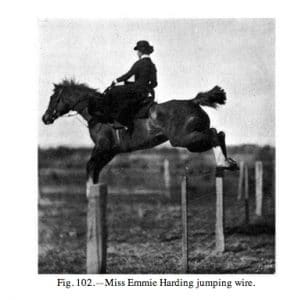 There’s a pragmatic question here, too. Even if we all agree that a saddle should fit well, how often should you check to see if it’s still fitting well, given that the horse’s back changes over time? You could fairly convincingly argue that frequent evaluation is best for the horse, but evaluation comes at a cost. The expense of regular evaluation and saddle adjustment (e.g., reflocking) may be a considerable deterrent. So, unless you’re made of money, it’s probably worth some effort to regularly check things out yourself, to see how the saddle fits and how your horse is performing.
There’s a pragmatic question here, too. Even if we all agree that a saddle should fit well, how often should you check to see if it’s still fitting well, given that the horse’s back changes over time? You could fairly convincingly argue that frequent evaluation is best for the horse, but evaluation comes at a cost. The expense of regular evaluation and saddle adjustment (e.g., reflocking) may be a considerable deterrent. So, unless you’re made of money, it’s probably worth some effort to regularly check things out yourself, to see how the saddle fits and how your horse is performing.
All that said, while saddle fitting is important, it’s probably most important in higher level performance horses. While you certainly want to have a saddle that fits your horse well, if your a pleasure or trail rider, or you just like to see if you can win a yellow ribbon at the occasional show, “precise” saddle fitting and custom saddles may not be worth the expense or effort. But you still may want one because they’re often really pretty and come with a lot of “Oh!” factor in and around the barns and shows.
BY THE WAY: You should be comfortable in the saddle, too.
ONE LAST FLY IN THE OINTMENT
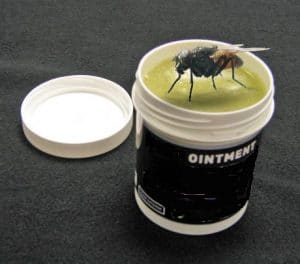 Even if you could sort everything else out, there’s still a big problem. The fact is that the tools currently available to veterinarians, trainers, and saddle fitters do not provide adequate objective measures of saddles and saddle fit. Otherwise stated, the “ideal” saddle fit remains as much a matter of opinion as it does fact. There’s a certain amount of trial and error involved, too. That’s certainly not to say saddle fit isn’t important: it is. But there seems to be a good amount of leeway in what “works” for an individual horse, as well.
Even if you could sort everything else out, there’s still a big problem. The fact is that the tools currently available to veterinarians, trainers, and saddle fitters do not provide adequate objective measures of saddles and saddle fit. Otherwise stated, the “ideal” saddle fit remains as much a matter of opinion as it does fact. There’s a certain amount of trial and error involved, too. That’s certainly not to say saddle fit isn’t important: it is. But there seems to be a good amount of leeway in what “works” for an individual horse, as well.
How saddles and saddle pads affect the horse’s back is a complicated issue. Ultimately, no single tool may be adequate to evaluate the complex interactions between saddle, horse, and rider. I’m pretty confident in opining that it’s a good idea to make sure that a rider is riding to the best of his or her ability before dropping a ton of money on a new saddle. New solutions to help evaluate horse and rider balance are becoming available. Hopefully, information obtained from such systems can help veterinarians, trainers, and riders record, evaluate, and store valuable information about their horses and themselves.
Lastly, here a couple of more resources. In the UK, they’re apparently devoting a lot of time and effort to saddle fitting at The Saddle Research Trust. If you’d like to see what they’re up to, please go to www.saddleresearchtrust.com. As is so often the case, you’ll find out that they know a lot of stuff, but that there still aren’t any easy answers. And, if you’d like to read a nice article on tack in general, written by the well-respected Dr. Hilary Clayton, CLICK HERE.

